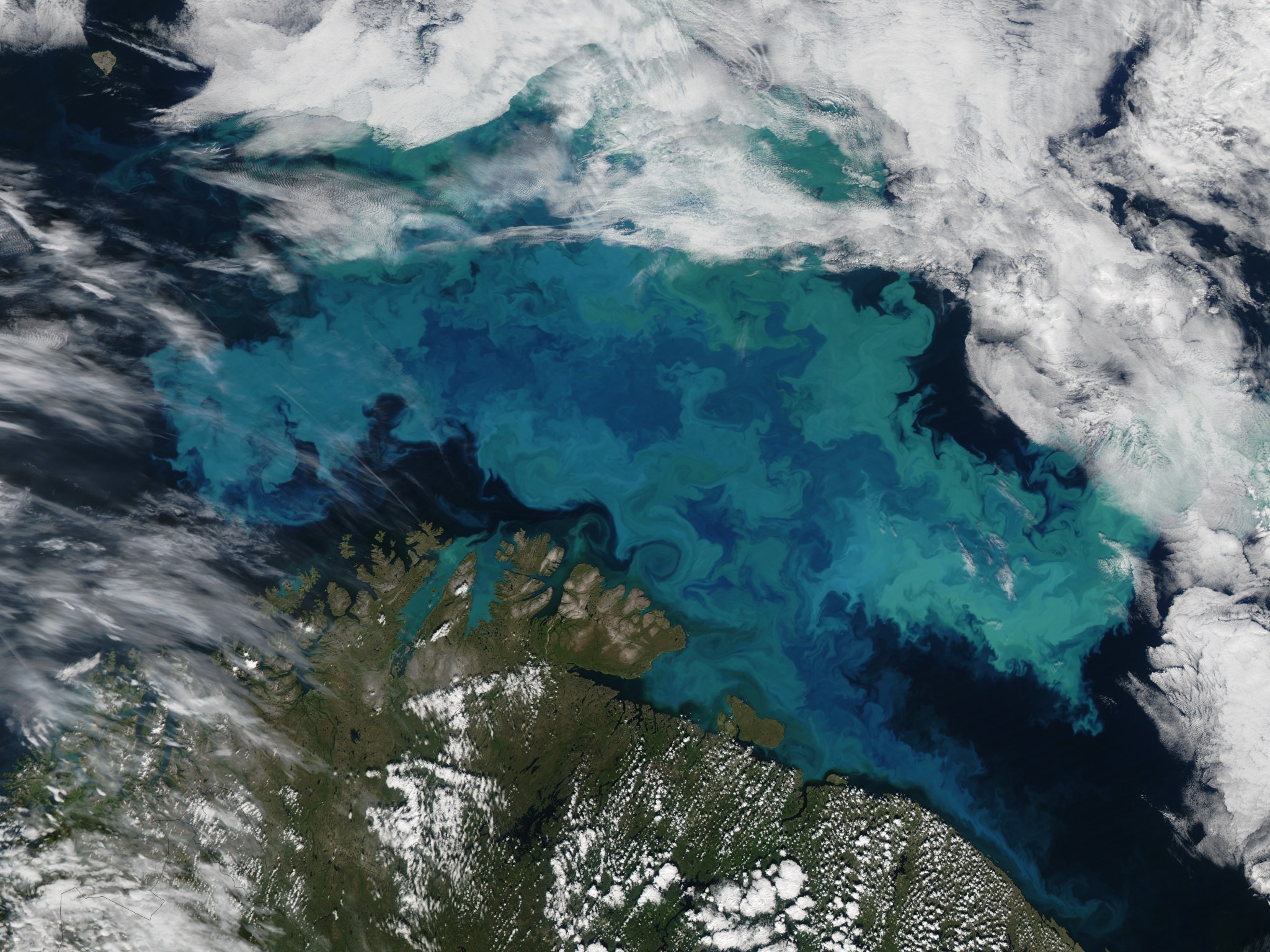The spacecraft for a new NASA satellite mission designed to monitor microscopic ocean life and its outsized impact on Earth’s climate will be built at the agency’s Goddard Space Flight Center in Greenbelt, Maryland.
The PACE (Plankton, Aerosol, Cloud, ocean Ecosystem) mission is scheduled to launch in 2022/2023 and will expand upon the NASA Goddard legacy of measuring ocean color from space. Satellite observations of ocean color give scientists detailed information on phytoplankton distributions, which form the base of the marine food web and are critical for understanding ocean ecology, the cycling of carbon from air to sea and back, and how these processes are being affected by climate change.

Following a recent decision by the agency, NASA Goddard will build the PACE spacecraft that will house the mission’s science instruments, electronics, and communications systems. Goddard is also building PACE’s primary instrument, a hyper-spectral radiometer that will measure the color of the ocean from the ultraviolet to shortwave infrared.
NASA officials made the decision to build the spacecraft in-house for a number of reasons, said PACE project manager Andre Dress at Goddard.
First, building the spacecraft at Goddard will allow the mission’s instrument design and capabilities to mature as the mission develops. Second, it provides flexibility to meet schedule and budget challenges. Finally, the needed engineering capabilities and facilities are currently available at Goddard and the project will provide an opportunity to maintain those core competencies at the center.
“This is a huge opportunity for the PACE mission and the Goddard Space Flight Center,” PACE project manager Andre Dress said. “We have a very talented team and we look forward to delivering on our promise to the science community and meeting the Agency’s expectations.”
NASA officials also recommended the PACE project proceed with a competitive procurement for a second instrument, a multi-angle polarimeter. With a polarimeter onboard, PACE will better monitor airborne particles called aerosols that absorb or reflect solar energy and can lead to cloud formation. Both of those processes remain some of the most difficult to quantify in terms of their impact on Earth’s climate and how it is changing. The PACE project is working toward a request for proposals on the polarimeter in the winter of 2016-2017.
This video is public domain and can be downloaded from the Scientific Visualization Studio.
NASA Goddard began its legacy of satellite ocean color measurements with the launch of the proof-of-concept Coastal Zone Color Scanner instrument on the Nimbus-7 mission in 1978. Dedicated global measurements began with the launch of SeaWiFS (Sea-viewing Wide Field of View Sensor) in 1997, followed by MODIS (Moderate-resolution Imaging Spectroradiometer) instruments on the Terra and Aqua satellites, launched in 1999 and 2002, respectively. The VIIRS (Visible Infrared Imaging Radiometer Suite) instrument on Suomi-NPP, launched in 2011, also measures ocean color.
The PACE mission will deliver the most comprehensive look at global ocean color measurements in NASA’s history. With PACE, scientists will study Earth’s vital ocean ecosystems and their relationship to atmospheric aerosols and clouds. Phytoplankton communities – measured from space by monitoring the color of the ocean – act as a natural pump in the cycling of carbon through the atmosphere and ocean. Future understanding of Earth’s climate and how it is changing will ultimately rely on these spaceborne measurements.
New measurements made by PACE will help resolve the role of plankton in the Earth system and how changes to plankton communities will affect fisheries, ocean ecosystem functions, climate feedbacks and human health.
“PACE will be a game changer,” said PACE project scientist Jeremy Werdell of Goddard. “Its measurements will enable unprecedented insight into how the ocean and atmosphere are responding to and impacting Earth’s changing climate.”
For more information about PACE, visit:

























